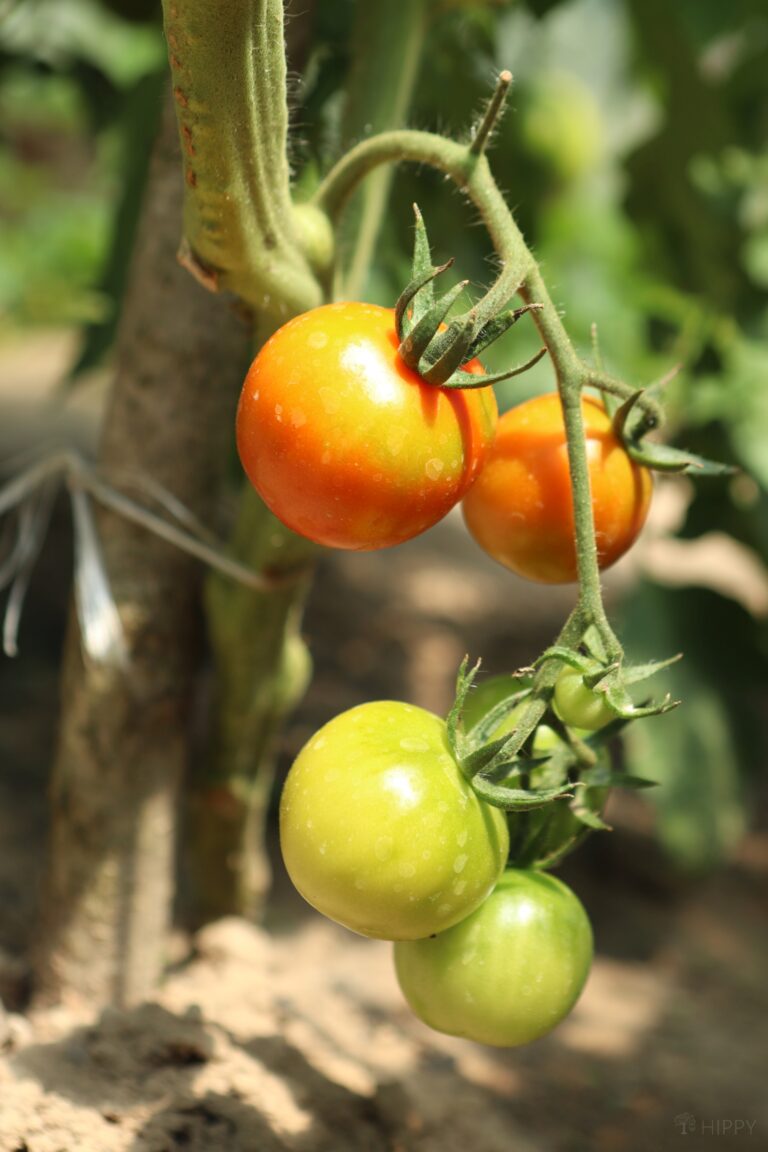
All gardeners plant lots and lots of tomatoes, right? Well, at least the vast majority of us do.
If you want to grow the healthiest and most delicious tomatoes you possibly can this gardening season, there are just a few things to help ensure a better chance of success.
There are a few very easy-to-do tomatoes growing tips you can use to consistently grow bumper crops of ripe, juicy tomatoes, and get the best tomato harvest ever.
If you want to grow the healthiest and most delicious tomato plants you possibly can this gardening season, there are just a few things to help ensure a better tomato harvest.
Table of Contents
Pick the Best Varieties – Or Experiment With Several!
Not all tomatoes are the same! There are tons of different tomatoes you can choose from when you are beginning to develop your garden.
I recommend choosing a few different options so that you have a varied harvest that will suit all kinds of culinary applications.
No matter what kind of tomatoes you decide to grow, make sure you purchase your plants or seeds from a reputable nursey or greenhouse.
They will be able to answer any of your questions about how to grow tomatoes in your specific growing area.
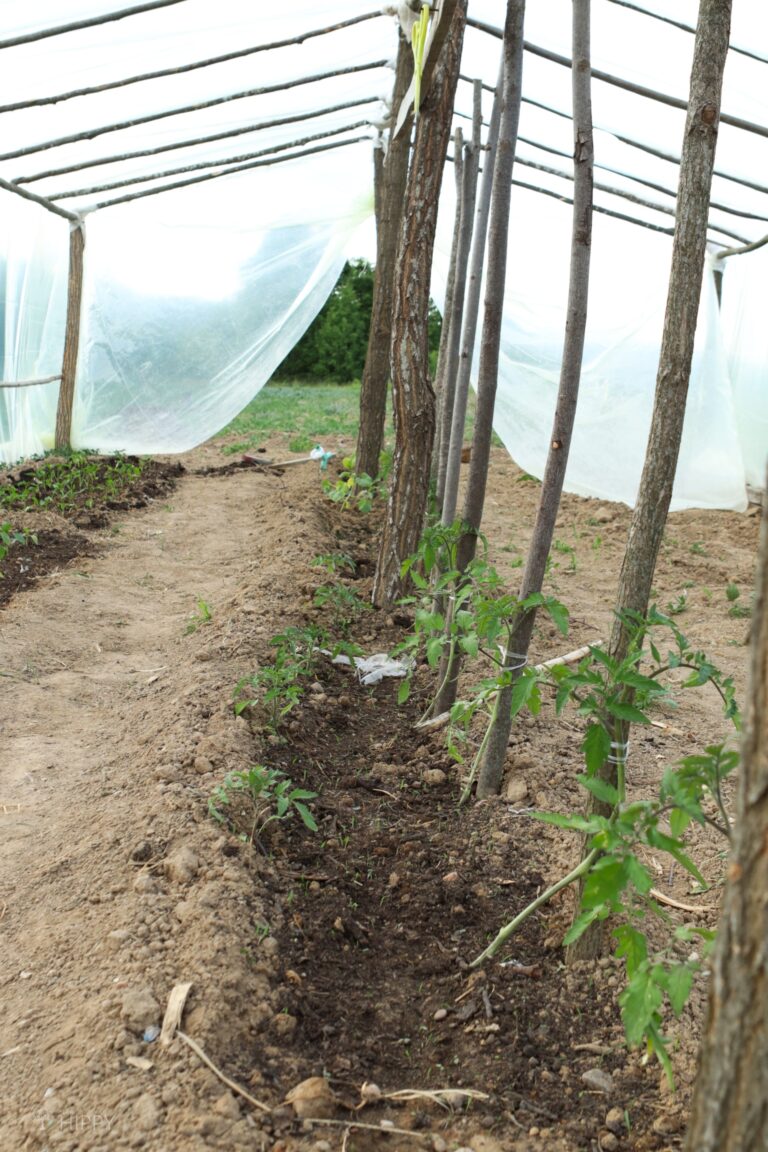
When you are deciding what kind of tomatoes to grow, know that they can be broken down into two large categories: determinate and indeterminate.
Determinate tomatoes bloom and set fruit all at once and then decline. They don’t require staking or pruning for the most part, either.
Indeterminate tomatoes, on the other hand, will produce tomatoes all summer long. Their flowers grow along the vines instead of at the ends. You do need to support and prune these tomatoes, but the extra work is well worth the larger bounty.
Next, you can choose between heirloom and hybrid tomatoes.
Pretty much all tomatoes that are grown today have been bred in some way – their reproduction and pollination have been controlled to encourage certain qualities.
Heirloom tomatoes are the purest form of tomatoes. They have been developed through open-pollination alone.
Hybrid tomatoes, on the other hand, result from forced cross-pollination between two different varieties.
Hybrid tomatoes offer some of the best disease resistance, but heirloom tomatoes offer some of the most unique and best flavors.
The type of tomato you choose will be determined by these choices, as well as by the zone you live in.
Some tomatoes do best in certain zones, so it’s important to ask your local nursery what your best options might be.
You should plan on two plants per person if you live in a warm growing zone, but in a cold area, you should plan on four plants per person, as it will have less time to produce.
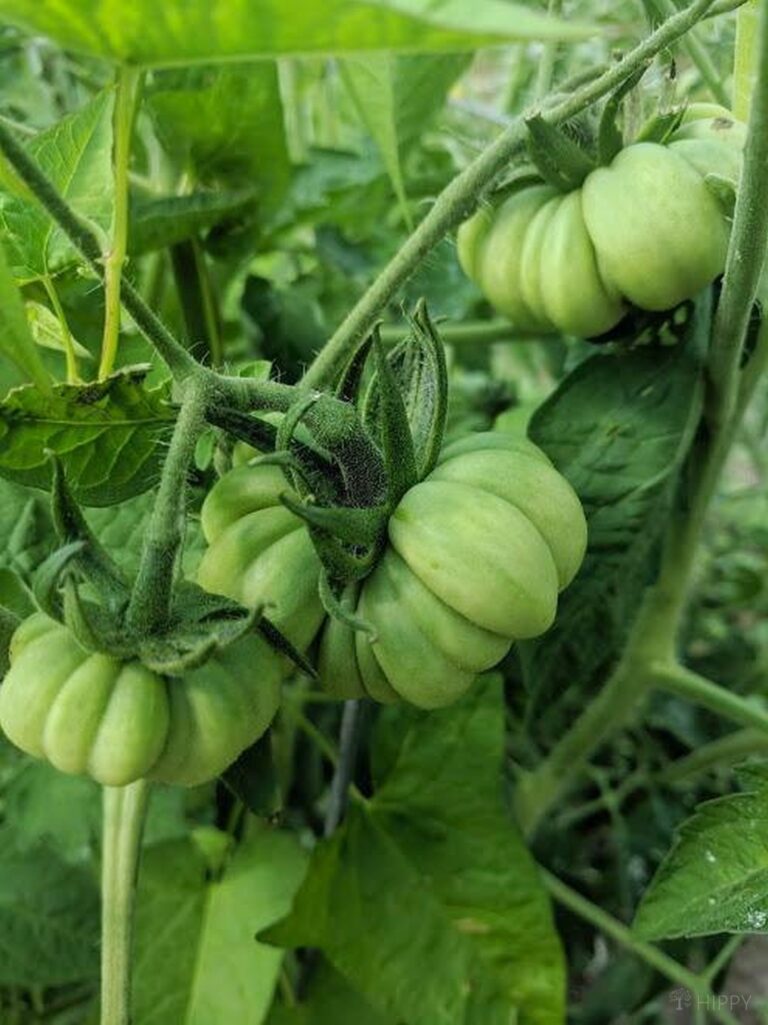
Tomato Varieties
Here are the ten most common types of tomatoes:
Beefsteak Tomatoes
These tomatoes are some of the largest tomatoes you’ll find. They have meaty textures and an intense flavor.
You can find them in red, pink, black, yellow, or purple, and they’re best for slicing and using on sandwiches or burgers.
Plum Tomatoes
These tomatoes are most commonly used in premade sauces and tomato paste. You can also use them diced or canned.
They are cylindrical and have minimal seeds. A common type of plum tomato used in sauces is the Roma.

Yellow Tomatoes
Yellow tomato plants – as you might guess – produce yellow tomatoes. These tomatoes generally are less acidic and are actually higher in folate (but lower in vitamin C) than traditional red tomatoes.
Cherry Tomatoes
Who doesn’t love munching on a fresh cherry tomato? These tomatoes ar the smallest, but also the sweetest, of all tomatoes. They can be red, green, yellow, or black, and they have a soft texture.
Campari Tomatoes
These tomatoes are also referred to as “tomatoes on the vine.” They are a little bit bigger than cherry tomatoes but smaller than grape tomatoes. They are usually deep red, very sweet, and have minimal acid.
Pear Tomatoes
The pear tomato is an heirloom tomato species prized for its small, sweet yellow fruits. These are generally shaped, as you might assume, like little pears.
Be Selective About Your Seedlings
Very few people are able to direct sow tomato seeds into the ground. If you live in a growing zone where it is warm enough for you to do this, you are lucky!
You won’t have to worry about purchasing or transplanting seedlings.
However, if you need to transplant seedlings, you should look for the healthiest possible plants.
Big is not always better – if the plant is exceptionally tall but looks like it’s about to fall over, take a pass.
This means it is leggy and has struggled to receive enough light. It’s already stressed and the additional stress from transplanting it probably won’t do it any favors.
Look for a plant that is leafy instead of tall. It should have a defined main stem and should be about six inches tall.
Decide whether growing in containers or in the ground is best for your situation.
Make sure you select a bright and well-ventilated, airy location for your tomatoes. Your tomato plants should receive at least 10 hours of full sun in the summer.
Also, make sure you have enough room between your tomato plants to provide for adequate air circulation.
If you have perfect circumstances outside – meaning full sun, at least ten hours, and well-draining soil – go ahead and plant directly in the garden.
You can plant your tomatoes in raised beds, directly into the ground, or even in sheets of black plastic (this will help warm things up if the weather is cool and will also help direct heat to your tropical tomato plants).
Otherwise, growing tomatoes in containers might be a good choice for you.
Growing tomatoes in containers will allow you to move them whenever you see fit, which is a good option if the weather shifts unexpectedly or if you have limited space.
Plus, growing in a container allows you to have maximum control over soil and moisture, too.
If you have poor quality soil, it will be much easier to grow your tomatoes in a pot, since you won’t have those outside elements to deal with.
You can grow your tomatoes in any kind of container, but we recommend one that is at least eighteen inches wide and deep.
This will give your plants plenty of space to grow without getting rootbound. You can even install irrigation systems in your containers if you see fit! Just make sure whatever container you have has plenty of drainage holes.
To see more on how to grow tomatoes in pots, read the post here. Three great container tomato varieties are shared!
Get Ahead of Your Growing Zone
If you live in a cold growing zone (think zone 5 and cooler), it may be helpful for you to get a jumpstart on your tomato growing season by starting seeds inside.
Tomato plants take a long time to mature, especially if you want repeated harvests of juicy, delicious fruits.
Therefore, you should start seeds in peat pots inside, either in January, February or March, depending on how soon you want to plant.
Then, you can go ahead and transplant once the soil temperatures have warmed up and you no longer have to worry about a frost.
When you are ready to transplant, make sure you wait until the weather is warm and the daylight hours are long enough to support your developing plants.
The ground should be completely warm – tomatoes are sensitive to soggy soil, and it’s easy for your plants to become waterlogged in the early spring.
And don’t just move your plants directly outside in one go! It’s really important that you harden off your seedlings.
Over the course of a week, expose your tomato plants to increasing amounts of outside conditions each day.
Start with an hour the first day, then build up to a full 24 hours by the last day, which is when your plants will be ready to transplant into the ground.
Hardening off your plants is important because it will acclimate them to the conditions of the outdoors.
I’m not just talking about temperature, either, although that’s important, too. Your plants need time to get used to the wind, rain, and sun before they move into the ground.
Transplant on a cloudy day so that you don’t have to worry about the harsh sun scalding your delicate plants.
You should try to transplant on a day with minimal wind, too, so that you don’t have to worry about your vulnerable plants being snapped by a rogue gust of wind.
If a frost or unexpected cold snap does happen to pass through after you’ve transplanted your seedlings, you can cover them with a row cover or light canvas.
Just make sure you don’t suffocate the developing branches.
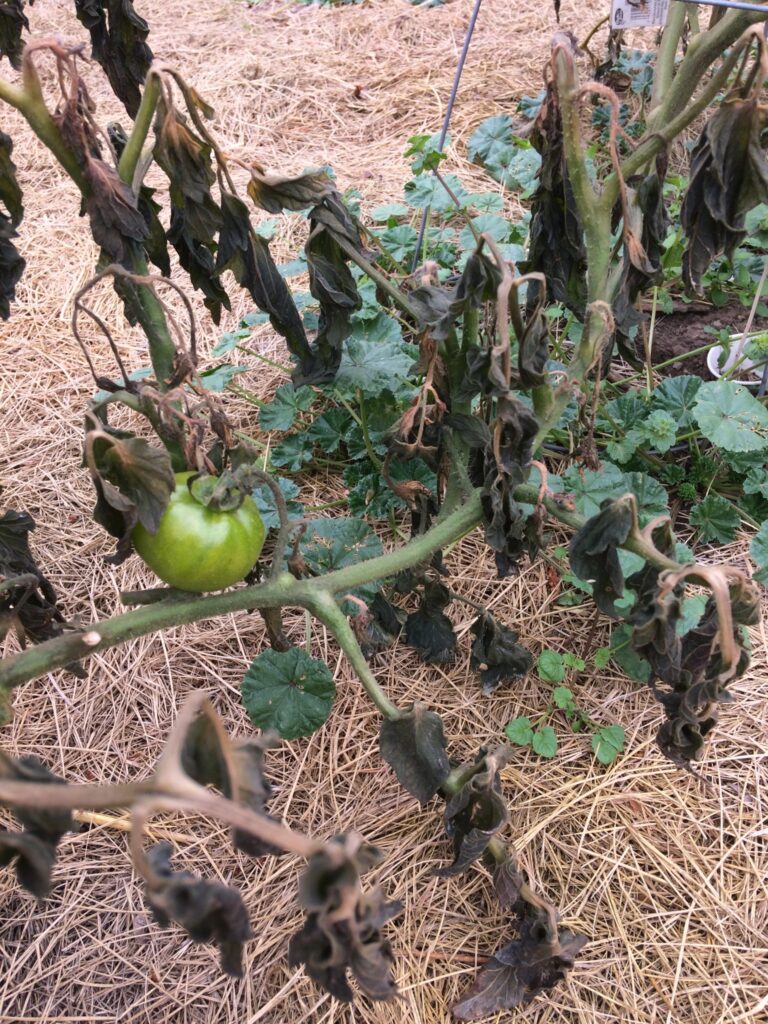
Make Sure You Plant Deep for the Best Possible Results
Burying the stem of the tomato plants allows the plant to sprout new roots which will help improve strength and vitality.
This also provides better absorption of the nutrients your tomato plants need to grow faster and healthier.
To do this, remove the bottom sets of leaves and bury the stem up to just below the bottom of the remaining leaves.
You can also plant your tomato plants horizontally in a long trench with just the top leafy part exposed. The plant will correct itself and start growing up vs. along the ground.
Doing this will help your tomato plants establish the strongest root structure possible because all those little fibers along the plant stem are little roots waiting to develop.
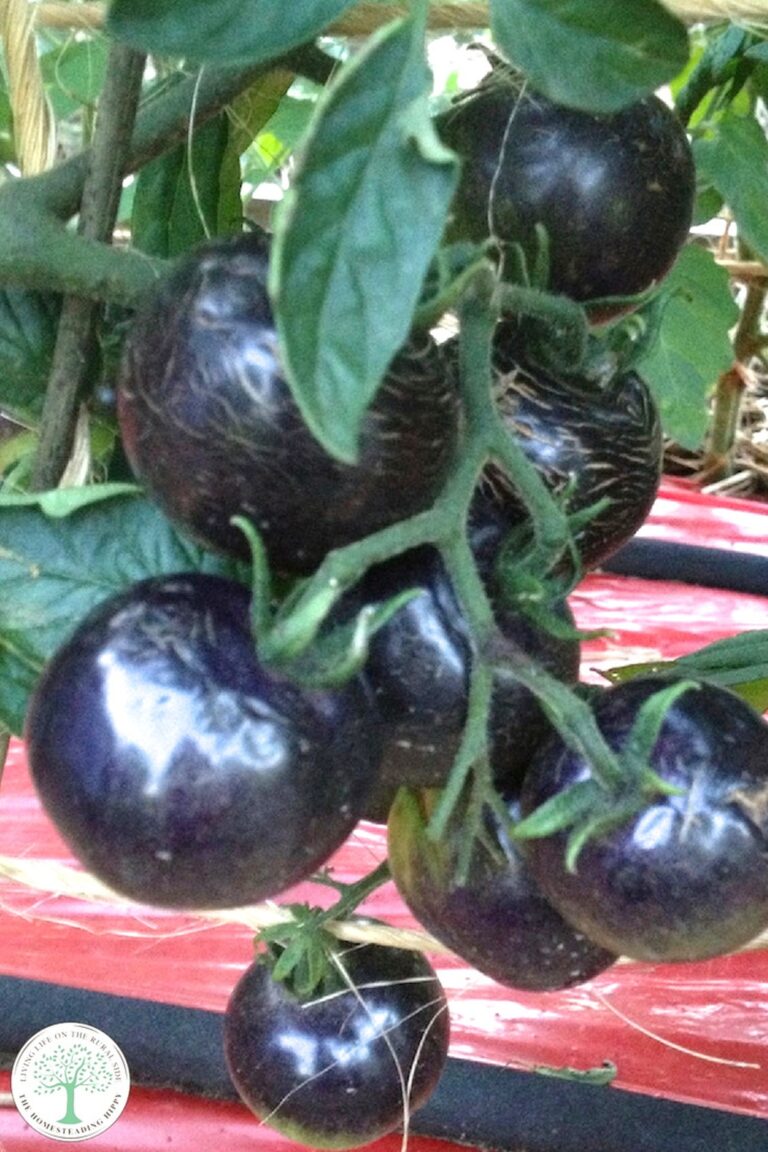
Testing your soil is important for the proper growth of your tomato plants.
Whether you take a sample of your soil to nearby gardening or home improvement center that offers lab testing, or you purchase a DIY pH level testing kit, this step is crucial.
After you discern your ground’s alkaline and acidity levels, you can add the appropriate soil amendments to reach the recommended 6.0 – 6.8 pH for tomatoes.
Adding in compost can help balance some of the levels, as well as chicken manure tea or crushed egg shells.
You can even add Epsom salts, which will help prevent the likelihood of diseases like fungal growths.
It’s also a good idea to provide lots of space between your separate tomato plants.
Tomatoes are very susceptible to fungal growth, particularly if you have the bad habit of watering at night or it is a particularly rainy season.
If you space your plants out, it will make it easier for oxygen to get through – and your risk of fungal infection will be much lower.
Trick your young plants into being stronger by plucking the first flowers that appear.
This allows your tomato plants to grow more extensive root systems, as well as a mature and developed leaf canopy, before any fruit is produced.
You should also pull off any suckers, which are the little offshoots of the main stem below your first fruit-producing branch.
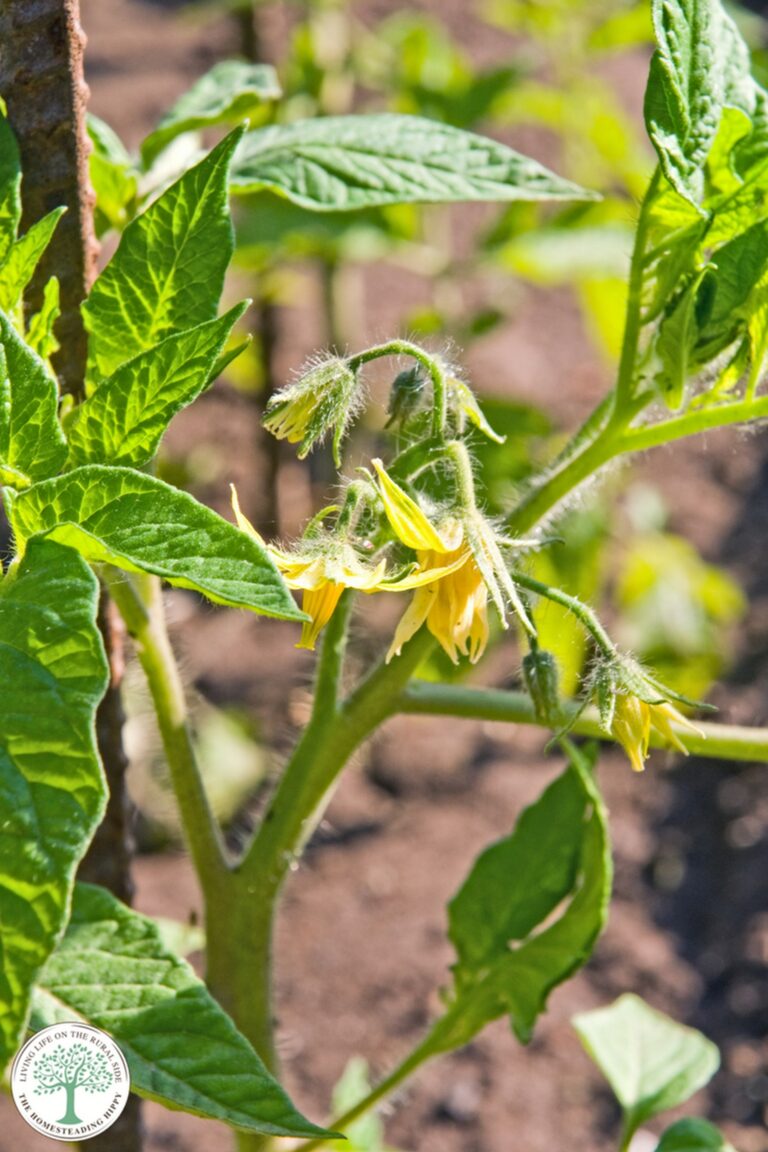
Use Cages or Fencing To Grow Your Tomatoes Vertically
When you allow tomato vines to lay on the ground, your plants are much more susceptible to pests and diseases.
When you provide a stake or cage, these garden dangers have a harder time attacking your plants.
Sprawling vines also take up valuable space in your garden, and the backbreaking process of bending over to harvest the fruit is no fun, either.
To see tomato plants and trellis ideas, read the post here.
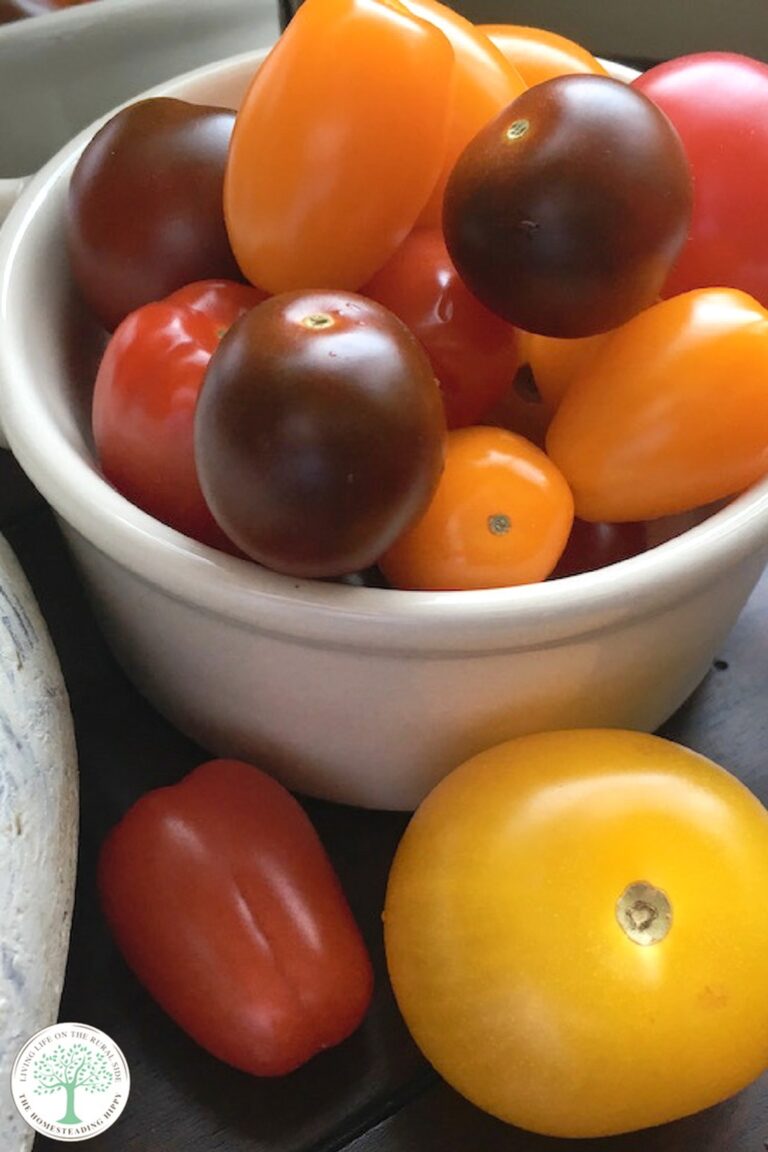
When your plants are setting fruit, and the first fruit of the season begins to appear, add organic compost, either your own or store-bought.
This will encourage new, healthy growth in your tomato plants and a bigger tomato harvest.
Scratch compost into the ground around the stem, and at the same time, trim a few of the upper leaves on each plant. Pruning your tomatoes regularly will help to encourage fresh growth.
Adding fertilizer is important, but watch your plants carefully to make sure you aren’t committing one of the most common tomato plant sins – overfertilizing. It’s very easy to overfertilize a tomato plant.
Avoid using a nitrogen-only fertilizer. This may give the appearance that your tomato plant is thriving, putting on lots of new growth, but it will likely fail to set and ripen fruit as all of its energy will be used up on foliage.
Be sure to continue to water deeply each week, allowing for up to 1 inch of water each time to soak into the soil. This will help with setting fruit and keeping the plant strong.
To get tips on how to prevent blossom end rot, read the post here.
Whatever variety of tomato seedlings you plant, consider planting new tomato plants three weeks after your original plants are planted.
This will extend your growing season and guarantee that if you run into any weather or pest problems, you are still sure to enjoy multiple, healthy harvests.
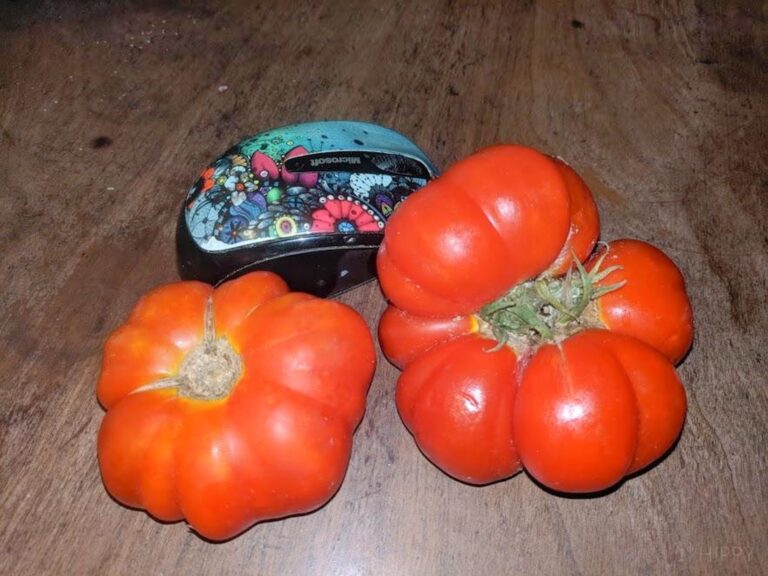
This means you won’t need to harvest and use your entire crop at once, and you can enjoy a fresh garden tomato harvest longer in the season!
This rotation system is also a great way to enjoy different tomato varieties, and have fresh ripe tomatoes for every purpose!
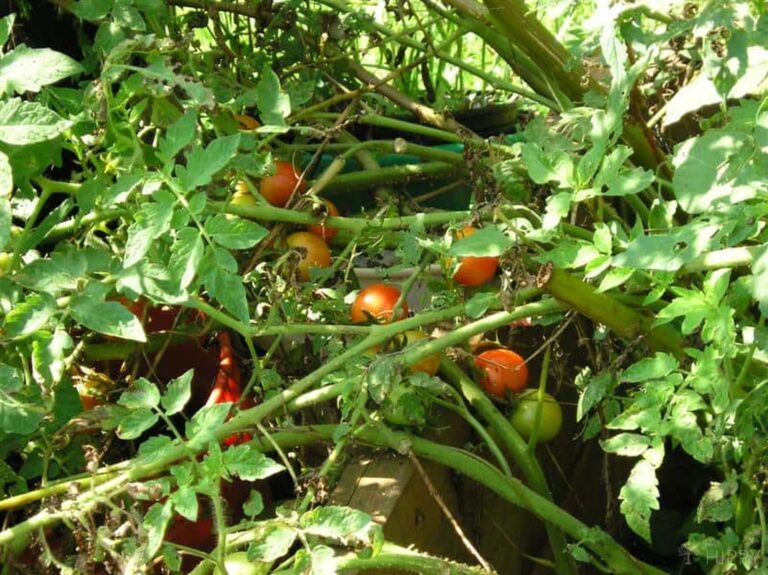
Common Problems in Tomato Plants
Calcium deficiency is one of the most common problems in growing tomatoes. It’s a nutrient deficiency that can cause your plants to die back prematurely.
Make sure your pH is roughly 6.5 (test your soil before planting, and you can also test after, too) and add gypsum or lime to increase calcium.
Crushed eggshells can also naturally improve the calcium content of your soil.
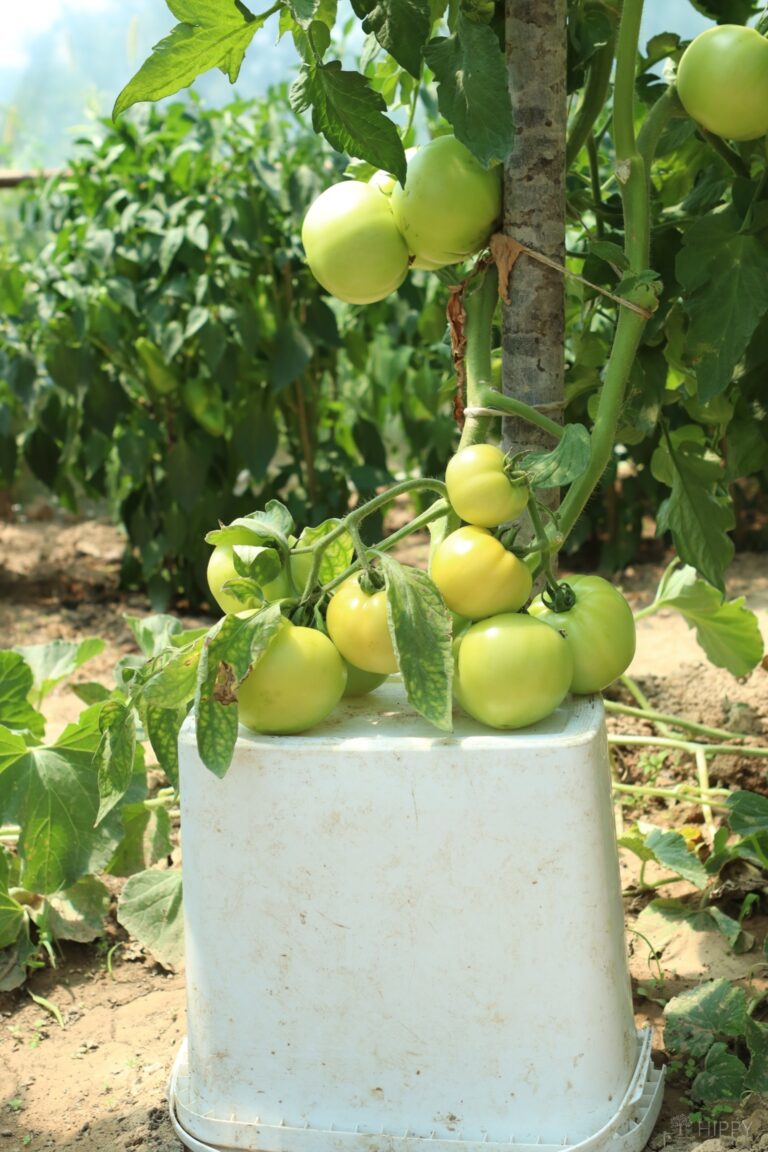
Try not to water your plants too much, either. This can cause the roots to rot. Your plant needs only about two inches of water each week during the growing season.
Consider using an irrigation system that will help prevent disease while improving water infiltration.
Soaker hoses can be helpful since they’ll only water where the plants need water – you won’t have to worry about water getting on the leaves and causing fungal growth.
Mulching around your plants can also help conserve water. I prefer to use straw or hay mulch around my plants, but I’ve also heard of people using wood chips, compost, and other ingredients, too.
Avoid overhead watering whenever possible, as this causes the leaves to dry off slowly and can lead to the growth of fungus.
Another common problem that can arise in your tomato crop is that of fruit cracks. These look like little concentric circles on the fruit and are caused by poor watering habits.
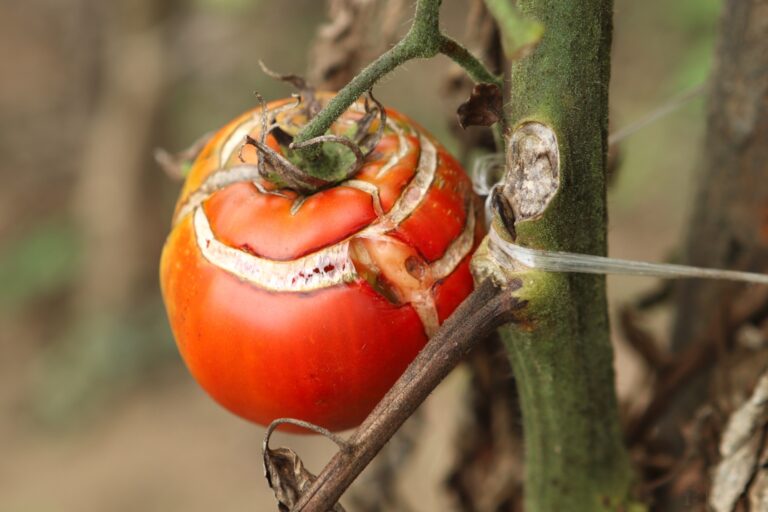
They make it easy for birds and bugs to snack on your fruit, but keeping your plants evenly moist can help prevent them.
The same goes for another common tomato plant problem – sunscald. Sunscald is worsened by excessive pruning (your plants need some leaves to protect the fruit from the sun).
If you live in a very hot, dry area, you can protect your tomatoes from the sun by covering them up with a shade cloth.
Both early and late blight can also affect your tomato crop. Early blight is caused by the fungus Alternaria solani, and it can overwinter in your soil. Rotating your crops is a great way to prevent this disease.
Keep in mind that you will also want to rotate out plants that are closely related to tomatoes, too – such as eggplant and peppers – because these plants can also be affected by blight.
Late blight is related to early blight, but this is more likely to come on later in the season. It can cause a total crop loss and is also caused by a fungus.
It can affect tomatoes as well as potatoes, peppers, and eggplant. Late blight can be prevented by selecting hybrid tomato varieties that are resistant to the disease.
Other common tomato plant diseases include fusarium wilt, verticillium wilt, bacterial speck, and powdery mildew.
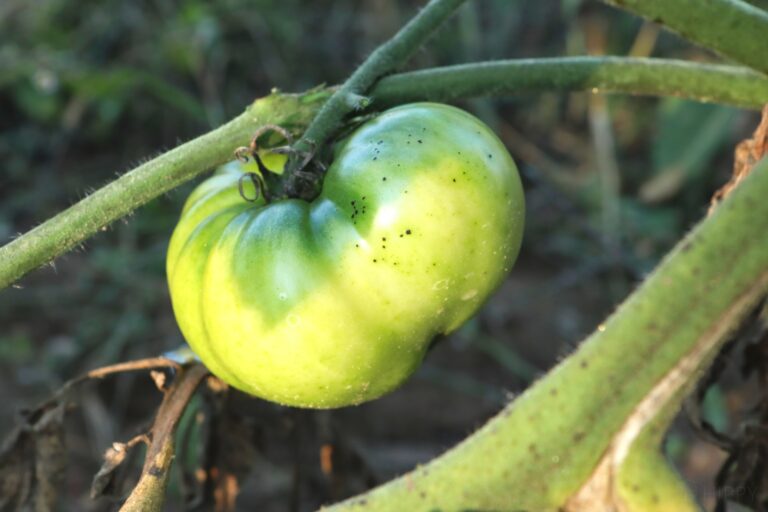
Practicing good watering habits can prevent these diseases from becoming problematic, as can practice excellent fertilization techniques and rotating your crops between seasons.
Pests like cutworms and hornworms can easily be prevented by monitoring your plants carefully for any changes in their health and growth.
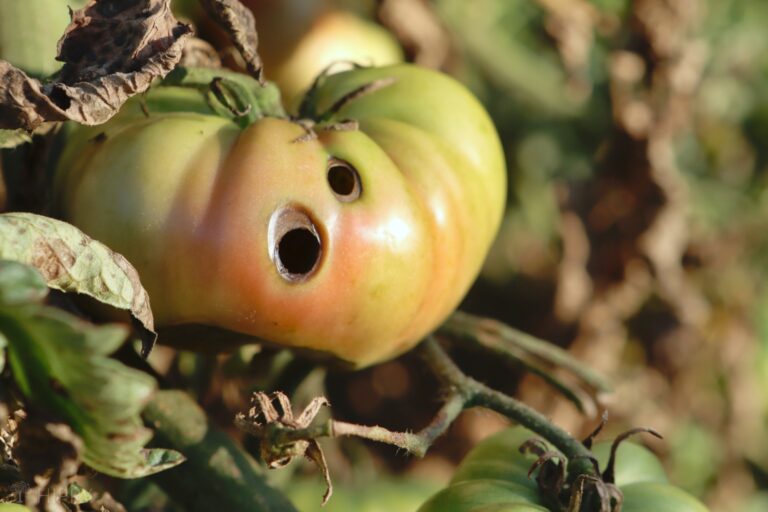
In some cases, you may be able to manually exclude certain pests by using weed barriers, protective rings made out of cardboard or plastic, or row covers.
You can shake some pests off your plants and others can be prevented by encouraging healthy populations of beneficial insects, birds, and other creatures, too.
What are some of your favorite gardening tips for growing the best tomatoes?
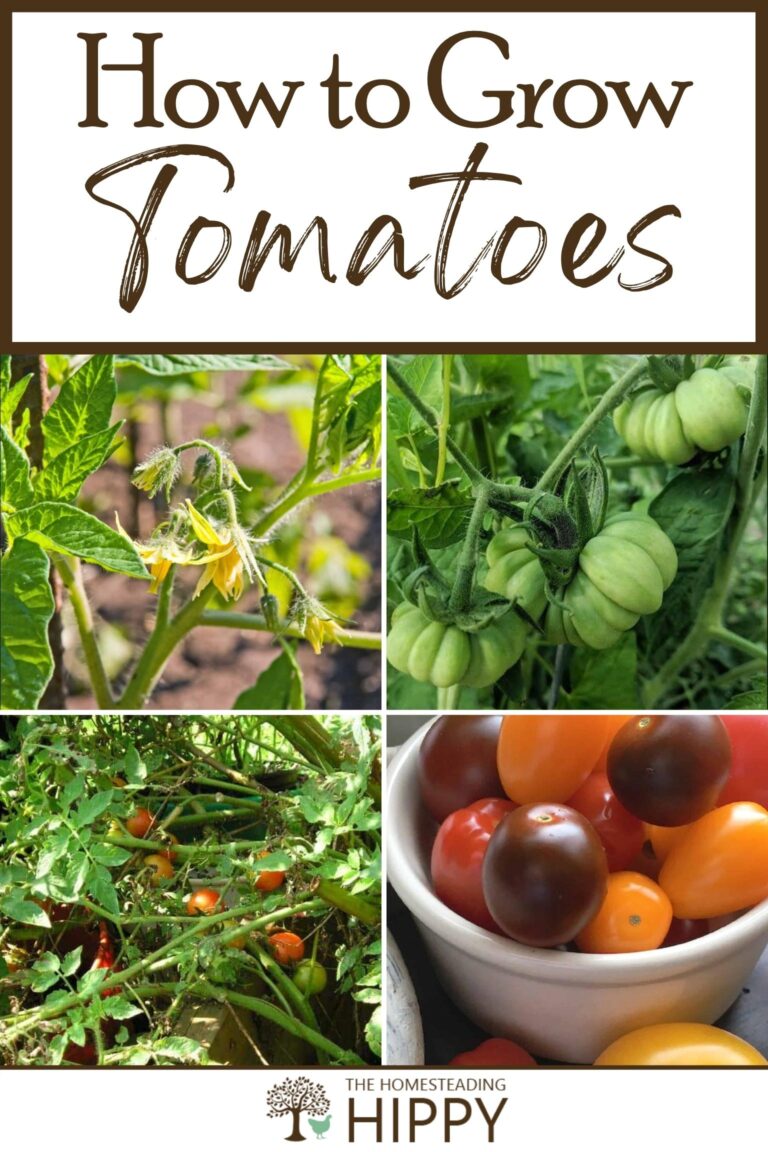

Rebekah is a full-time homesteader. On her 22 acres, she raises chickens, sheep, and bees, not to mention she grows a wide variety of veggies. She has a huge greenhouse and does lots of DIY projects with her husband in her ever-growing homesteading endeavor. Learn more about Rebekah here.
